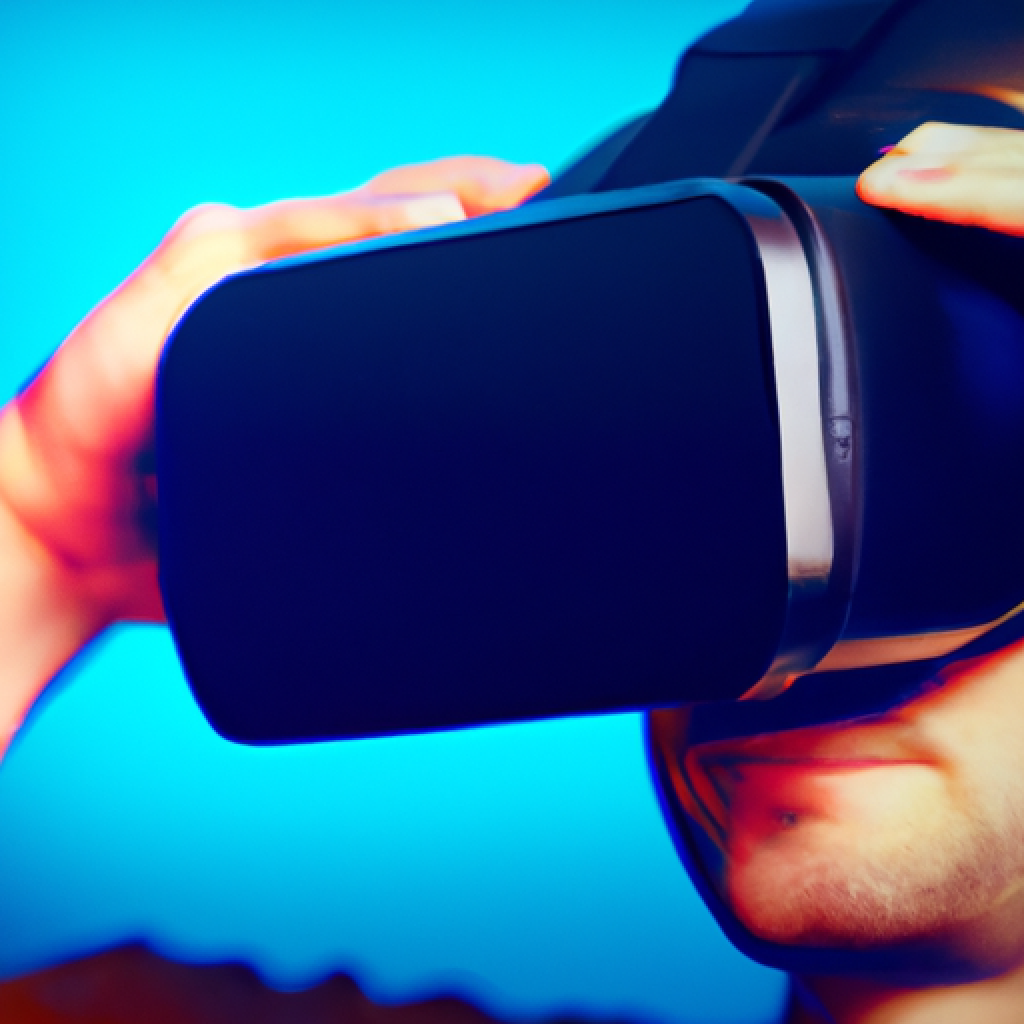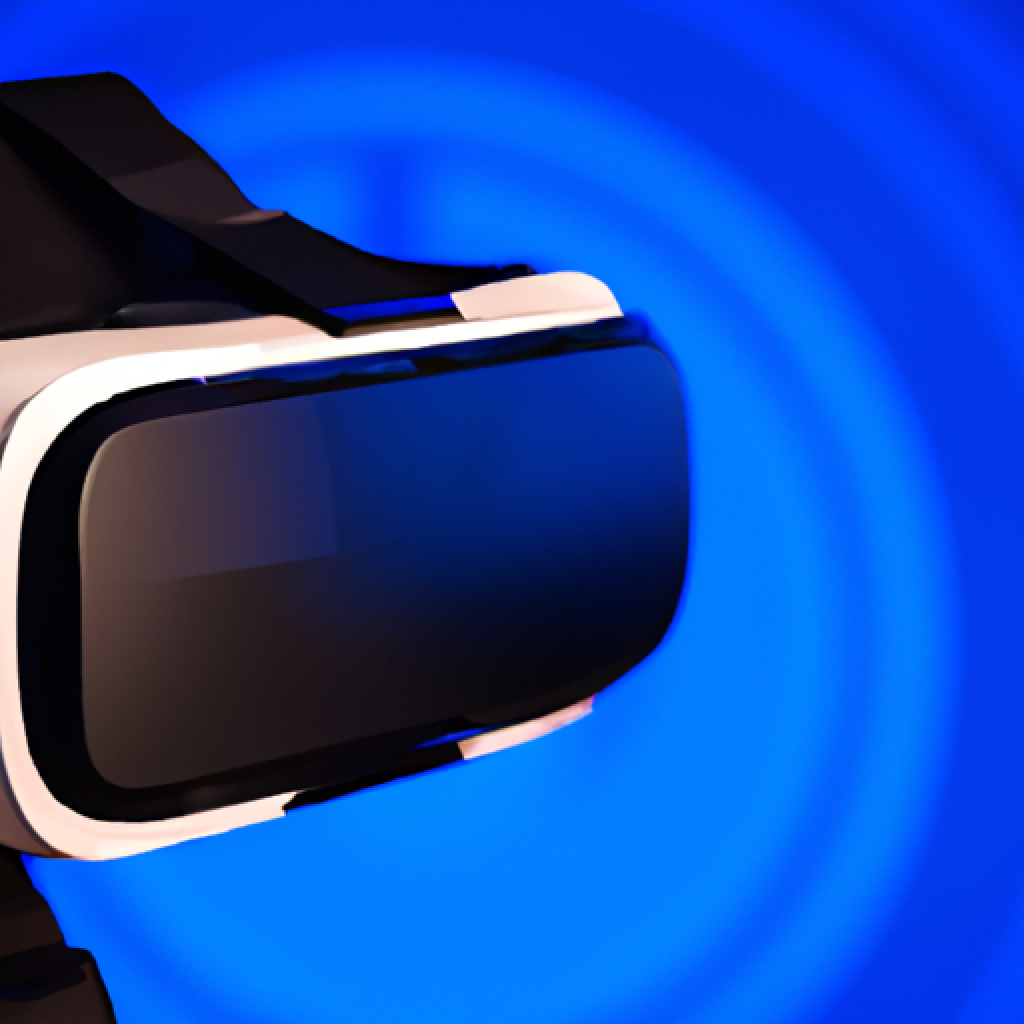Is VR Cheaper Than AR?

So, here’s the thing: virtual reality (VR) and augmented reality (AR) have been all the rage lately. You know, those fancy technologies that transport you to different worlds or overlay digital information onto the real world? Yeah, those. But here’s the burning question: which one is cheaper? Well, that’s what we’re here to find out.
Understanding VR and AR
Virtual Reality (VR) and Augmented Reality (AR) are two emerging technologies that have gained significant popularity in recent years. While they both offer immersive experiences and have the potential to revolutionize various industries, there are distinct differences between the two.
Definition of VR and AR
VR refers to a computer-generated simulation of a three-dimensional environment in which users can interact and explore using specialized equipment, such as headsets and controllers. This technology aims to transport users into a completely virtual world, enabling them to experience sights, sounds, and even touch in a simulated environment.
On the other hand, AR overlays computer-generated elements onto the real world, enhancing and augmenting the user’s perception of reality. AR utilizes cameras, displays, and sensors in devices like smartphones or smart glasses to seamlessly blend digital content with the real environment, allowing users to interact with virtual objects and information within their physical surroundings.
The main differences between VR and AR
The fundamental distinction between VR and AR lies in the level of immersion and interaction they provide. VR creates a fully immersive experience by completely replacing the user’s real-world perception with a simulated environment. In contrast, AR enhances the real world by adding digital elements, allowing users to maintain their connection to reality.
Another significant difference is the hardware requirements. VR typically requires specialized headsets, often with built-in displays and motion tracking capabilities, as well as additional peripherals like controllers for interaction. AR, on the other hand, can be experienced using everyday devices such as smartphones or dedicated AR glasses.
How VR and AR work
VR relies on sophisticated tracking systems to monitor the user’s movements and translate them into corresponding actions within the virtual environment. These systems use sensors, such as accelerometers and gyroscopes, to detect motion and orientation changes. The VR headset’s display then reflects the user’s perspective, creating a sense of presence and immersion.
In contrast, AR devices use cameras and sensors to capture the real world, and their software processes the data to add virtual objects or information to the user’s field of view. This process is often enabled by computer vision algorithms that recognize and track real-world objects, aligning the virtual content with the physical environment. This allows users to interact with digital elements in real-time.
VR Costs
While VR can provide incredible immersive experiences, it is essential to consider the costs associated with adopting this technology.
Cost of VR hardware
VR hardware typically consists of a high-quality VR headset, controllers, and often additional sensors for accurate tracking. The cost of VR headsets can vary widely, ranging from entry-level devices priced at a few hundred dollars to high-end options exceeding a thousand dollars. The higher-end headsets often offer superior display resolution, wider field of view, and more advanced tracking capabilities, resulting in a more immersive experience.
Cost of VR software
In addition to the hardware, users must also consider the cost of VR software, including games, applications, and experiences. VR software can be purchased through dedicated platforms, such as SteamVR or Oculus Store, with prices varying depending on the complexity and popularity of the content. While some VR software is available for free, premium experiences and games can range from a few dollars to several tens of dollars.
Maintenance and upgrades of VR
Like any technological device, VR hardware requires regular maintenance and occasional upgrades. This may include software updates, firmware upgrades, and hardware repairs if necessary. While routine maintenance is generally minimal, hardware upgrades or replacements can add significant costs, especially for users who want to stay up to date with the latest advancements in VR technology.

AR Costs
While AR offers unique benefits, there are also costs associated with implementing and experiencing this technology.
Cost of AR hardware
AR devices come in different forms, ranging from smartphones with AR capabilities to dedicated AR glasses. The cost of AR hardware varies depending on the type and quality of the device. Entry-level AR experiences can be enjoyed using smartphones, which most people already own. However, for a more immersive and hands-free experience, dedicated AR glasses are required. Currently, the price of AR glasses can range from a few hundred dollars to several thousand dollars for high-end options.
Cost of AR software
Similar to VR, AR experiences rely on software applications and content. The availability of AR software varies depending on the platform and device. Some AR applications are free, while others may require an upfront purchase or offer in-app purchases. Additionally, there may also be costs associated with accessing premium AR content, such as advanced educational or professional applications.
Maintenance and upgrades of AR
AR devices, like any other technology, require maintenance and occasional upgrades. These may include software updates, bug fixes, and compatibility enhancements. While routine maintenance is typically straightforward and low-cost, upgrading to the latest AR hardware advancements can be a significant financial consideration for users looking to leverage the full potential of AR.
Cost Comparison Between VR and AR
To determine which technology is more cost-effective, a comprehensive comparison of the costs associated with VR and AR is crucial.
Comparing hardware costs
When comparing VR and AR hardware costs, there is no clear winner. Entry-level VR setups may be more affordable than dedicated AR glasses, as many people already own compatible smartphones. However, high-end VR headsets can be more expensive than their AR counterparts. It ultimately depends on the desired level of immersion and the specific features required for the intended use.
Comparing software costs
Both VR and AR software costs depend on the specific content and applications. While some software is available for free, premium experiences and games can be quite costly for both VR and AR. However, the availability and diversity of free and low-cost software options have been increasing over time, making VR and AR more accessible for users with budget constraints.
Comparing maintenance and upgrades costs
Maintenance and upgrades costs for VR and AR can vary depending on individual use and preferences. Routine software updates and minor bug fixes are generally similar across both technologies. However, significant hardware upgrades or repairs may be more common in the VR space due to the higher complexity of the hardware involved. As VR and AR technologies continue to evolve, it is essential to consider the potential long-term costs and the need for future hardware or software upgrades.

Why VR Could Be More Expensive Than AR
While both VR and AR have associated costs, VR can be more expensive for several reasons.
High-end VR devices cost
For users seeking the most immersive and high-quality VR experiences, high-end devices are often necessary. These high-end VR headsets come with a premium price tag due to their advanced features, including higher display resolution, wider field of view, and more accurate tracking. The cost of these devices can be a significant barrier for users looking for the most immersive VR experience.
The price of advanced VR games and applications
As VR continues to evolve, developers create increasingly complex and graphically intensive games and applications. These advanced experiences often come with a higher price tag due to the development and production costs involved. Users who want to access the latest and most cutting-edge VR content may need to be prepared to pay a premium for these entertainment experiences.
VR accessories costs
In addition to the core VR hardware, users may also need to invest in additional accessories to enhance their VR experience. These accessories can include items like specialized controllers, haptic feedback devices, or even full body tracking systems. While these accessories are not essential for basic VR experiences, they can significantly enhance immersion and interaction. However, they can come with an additional cost, further increasing the overall expense of VR.
Why AR Could Be More Expensive Than VR
While AR generally provides a more accessible entry point, there are specific scenarios where AR can be more expensive.
Price of advanced AR technologies
While entry-level AR experiences, such as those provided by smartphones, are relatively affordable, more advanced AR technologies can come with a higher price tag. Dedicated AR glasses, offering a more immersive and hands-free experience, often require a more significant investment. The cost of these advanced AR devices can be a limiting factor for users looking to leverage the full potential of AR.
Cost of real-world integration in AR
AR has immense potential for real-world integration, allowing users to overlay digital information onto physical objects and spaces. However, implementing AR in real-world settings often requires additional investments, such as integrating AR software with existing infrastructure or developing custom solutions tailored to specific industries’ needs. These integration costs can significantly add to the overall expense of AR deployment.
AR development costs
Creating compelling AR experiences and applications involves specialized development and design skills. Developing advanced AR software often requires additional expertise in computer vision, spatial mapping, and 3D model creation. Hiring skilled developers or outsourcing AR development can add substantial costs, especially for businesses or organizations looking to create unique and tailored AR solutions.

Price Trends in VR and AR Market
Examining the historical and predicted price trends in the VR and AR market can provide insights into the future affordability of these technologies.
Historical price trends of VR
In recent years, VR hardware prices have shown a declining trend. From the initial introduction of consumer VR headsets, the average price has gradually decreased as more manufacturers enter the market and competition grows. This trend indicates that VR hardware is becoming increasingly affordable, making it more accessible to a broader range of users.
Historical price trends of AR
Compared to VR, the availability and affordability of AR devices have been more limited in the consumer market. However, there has been a gradual decrease in the prices of dedicated AR glasses, similar to the trend seen in VR hardware. This suggests that as the technology matures and more manufacturers enter the market, AR devices are likely to become more affordable and accessible.
Predicted price trends in VR and AR
As both VR and AR technologies continue to advance, it is expected that prices will further decrease over time. Increased competition, advancements in manufacturing processes, and economies of scale are likely to contribute to the reduction in prices. Additionally, the demand for VR and AR experiences is growing across various industries, which may lead to more affordable options and wider adoption of these technologies.
Affordable Options in VR and AR
Despite the initial costs associated with VR and AR, there are affordable options available for users looking to explore these technologies on a budget.
Budget-friendly VR devices
For users looking for an entry-level VR experience, there are several budget-friendly options available. Standalone VR headsets, such as the Oculus Quest, offer a combination of affordability and immersive capabilities. These devices eliminate the need for a powerful gaming PC, making them more accessible to a wider audience. Additionally, older generation VR headsets or used devices can provide a cost-effective way to experience VR without breaking the bank.
Affordable AR solutions
While advanced AR glasses may still be relatively expensive, there are more affordable AR solutions available. Smartphone-based AR experiences are accessible to most users, as they only require a smartphone with AR capabilities. Additionally, there are affordable AR development kits and software tools available, allowing users to create their own AR experiences without significant upfront costs.
Free and low-cost VR and AR applications
Both the VR and AR markets offer a growing number of free and low-cost applications that provide enjoyable and immersive experiences. App stores and dedicated VR/AR platforms often feature a wide range of content that caters to various interests and budgets. These free or affordable applications enable users to explore the capabilities of VR and AR without making a significant financial commitment.

The Impact of VR and AR on Various Industries
VR and AR technologies have already begun to revolutionize several industries, providing unique benefits and experiences.
Use of VR and AR in education
In the field of education, VR and AR have immense potential to enhance learning experiences. VR can transport students to historical events, distant places, or even simulate scientific experiments, offering a hands-on approach that traditional education methods cannot replicate. AR, on the other hand, can provide interactive learning materials, overlaying relevant information onto textbooks or real-world objects. These immersive technologies have the potential to transform how students learn and engage with educational content.
Use of VR and AR in healthcare
In healthcare, VR and AR can provide valuable simulation and training tools for medical professionals. VR simulations allow doctors and surgeons to practice complex procedures in a controlled virtual environment, improving skills and reducing risks. AR can enhance surgical procedures by overlaying critical information, such as patient data or real-time imaging, directly onto the surgeon’s field of view. These technologies have the potential to enhance patient outcomes, improve medical training, and revolutionize surgical procedures.
Use of VR and AR in gaming
Gaming is one of the most prominent industries where VR and AR have made a significant impact. VR gaming provides immersive experiences, allowing players to feel like they are inside the game world. From action-packed adventures to realistic racing simulations, VR gaming offers a level of immersion and interaction that traditional gaming cannot match. AR gaming, on the other hand, enables players to bring their favorite games into the real world, blending digital characters and objects with their physical surroundings. The combination of VR and AR has opened up new possibilities for gaming, creating unique and unforgettable experiences.
Is VR Cheaper Than AR?
Determining whether VR is cheaper than AR depends on various factors and context-specific considerations.
The overall cost comparison
When comparing the overall costs of VR and AR, there is no definitive answer as to which is cheaper. Both technologies have associated hardware costs, software expenses, and potential maintenance or upgrade requirements. The specific cost comparison will depend on the desired level of immersion, the specific use case, and the availability of affordable options in both VR and AR. It is essential for individuals or businesses to carefully assess their requirements and budget constraints when considering VR or AR adoption.
Contextual factors affecting the cost
The cost of VR or AR adoption can vary depending on the industry, use case, and intended application. For example, the cost of implementing VR in a complex medical training program may be higher than using AR for real-time assistance during surgical procedures. Additionally, the availability of affordable hardware and software options also plays a significant role in determining the cost-effectiveness of VR or AR for a particular context.
Conclusion on whether VR is cheaper than AR
In conclusion, whether VR is cheaper than AR depends on various factors, including the specific use case, desired level of immersion, and available budget. Both VR and AR have associated costs, and the affordability of each technology continues to improve over time. It is crucial for users to assess their individual needs, explore affordable options, and consider long-term maintenance and upgrade costs when deciding whether to adopt VR or AR. Ultimately, the decision should be based on the unique benefits and capabilities of each technology, in line with the user’s requirements and budgetary considerations.








